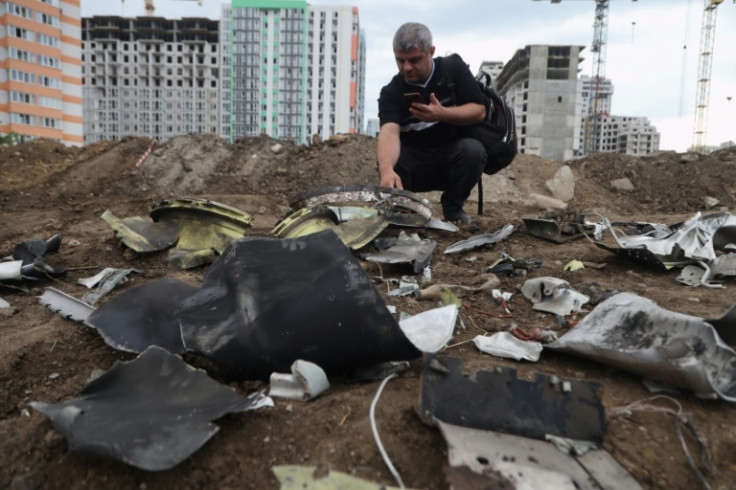Did Ukraine's Forces Fail To Shoot Down Russia's P-800 Onik Missiles During Odesa Attack?

KEY POINTS
- Russia launched its most formidable arsenal of missiles during an assault on Odesa
- Among the missiles deployed by Russia were at least seven Oniks (or Onyx) cruise missiles
- According to Ukraine's Air Force, they successfully neutralized 18 out of the total 38 projectiles launched by Russia
Russia unleashed its most formidable arsenal of missiles during this month's devastating assault on the port cities of Odesa. Among these were at least seven Oniks (or Onyx) cruise missiles, fired from the Bastion coastal missile system deployed in Crimea. The attack marked one of the gravest incidents in the region's recent history.
"The occupiers attacked the southern oblasts of Ukraine again on the night of 19-20 July! In this attack, Russian missiles hit Odesa and Mykolaiv. The enemy fired 38 projectiles in total: 19 cruise missiles and 19 kamikaze drones," the Ukrainian Air Force wrote on Facebook.
Based on the data released by the Air Force, Ukraine's air defense forces successfully neutralizing 18 out of the total 38 projectiles launched by Russia on Odesa during the intervening night of 19 and 20 July.
According to the Ukrainian Air Force's report, the Russian forces utilized a wide array of weaponry during the attack. These included Oniks cruise missiles and five Iskander-K land-based cruise missiles launched from Crimea, as well as four Kh-22 air-based cruise missiles and Kalibr sea-based cruise missiles fired from the Black Sea region. Additionally, the Russian troops deployed over 19 Shahed-136/131 attack drones, making the assault a multi-faceted and highly coordinated operation.
The Ukrainian Air Force said that they effectively neutralized a total of 18 targets during the attack. Among the successfully destroyed targets were two Kalibr sea-based cruise missiles, three Iskander-K land-launched cruise missiles, and 13 Shahed-136/131 attack drones.
But, none of the P-800 Oniks cruise missiles were intercepted or shot down.
After the attack, tweets surfaced attributing statements to the spokesperson of the Ukrainian Air Force. According to these tweets, the spokesperson allegedly said that the air defense service was unable to shoot down the P-800 Oniks missiles, which specifically targeted Odesa.
However, International Business Times cannot independently verify the claims.
The P-800 Oniks cruise missile, also known as the Yakhont, is indeed a supersonic missile capable of high speeds, which can make it challenging to intercept for certain air defense systems. Additionally, it is designed to fly at low altitudes, further complicating interception attempts. To gain a precise understanding of the capabilities and limitations of this weapon system, it is advisable to rely on verified information from reputable military and defense authorities.
The P-800 Oniks is a high-supersonic anti-ship missile that is known for its use in Ukraine, where it is sometimes employed against ground targets. This missile can reach speeds of up to Mach 2.5, making it a formidable weapon in terms of velocity. What sets the Oniks missile apart is its reputation for adhering to predetermined trajectories, which allows it to evade and bypass enemy air defenses effectively.
The US Army's Foreign Military Studies Office said, "One of the Onyx missile's most interesting characteristics is its guidance system. The guidance system can work with other missiles, allocate and classify targets based on their importance, and then select an appropriate attack scheme.
"Following the destruction of the primary target, the remaining missiles attack other ships, so no target is attacked by more than one missile."
© Copyright IBTimes 2024. All rights reserved.





















